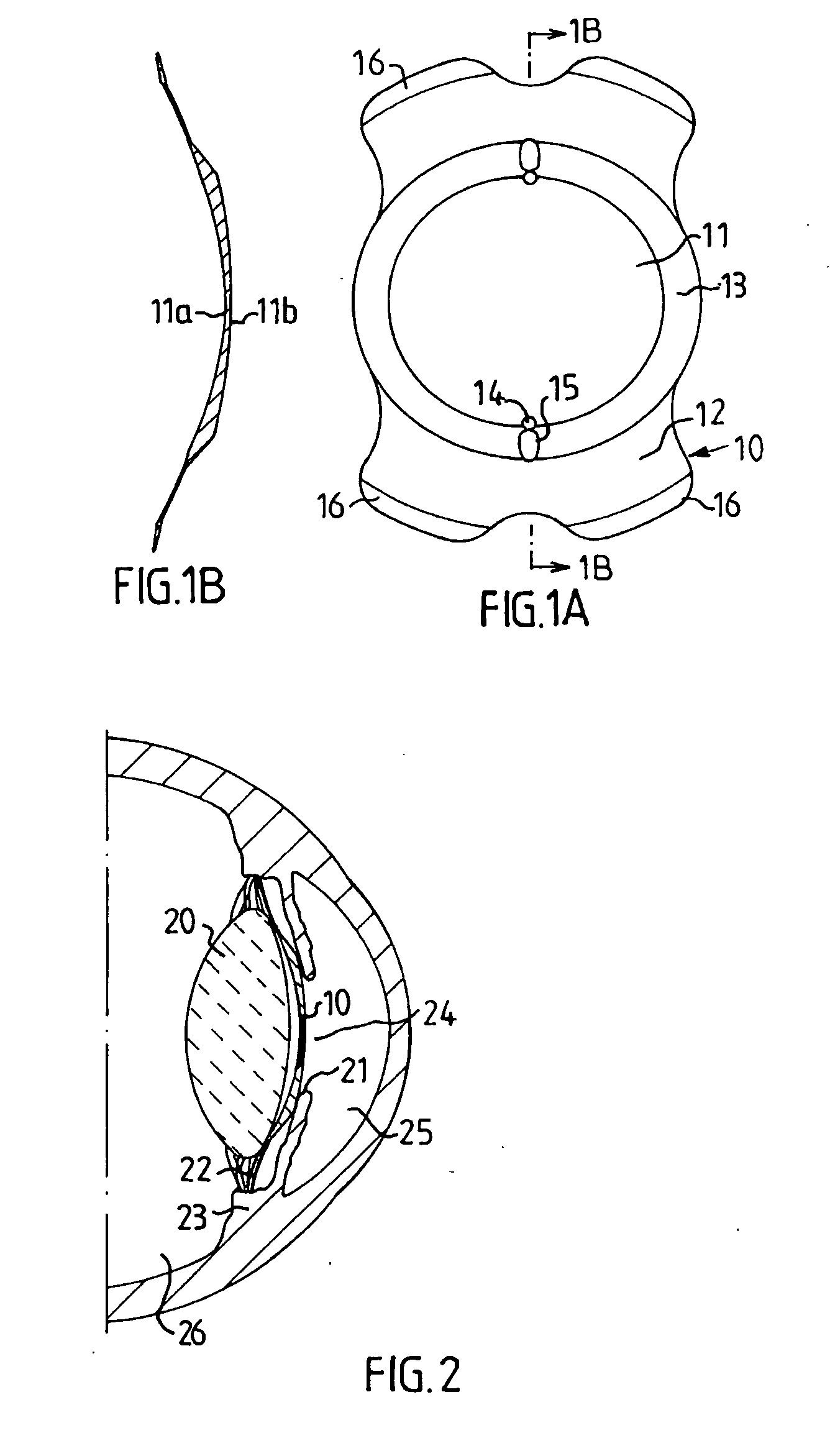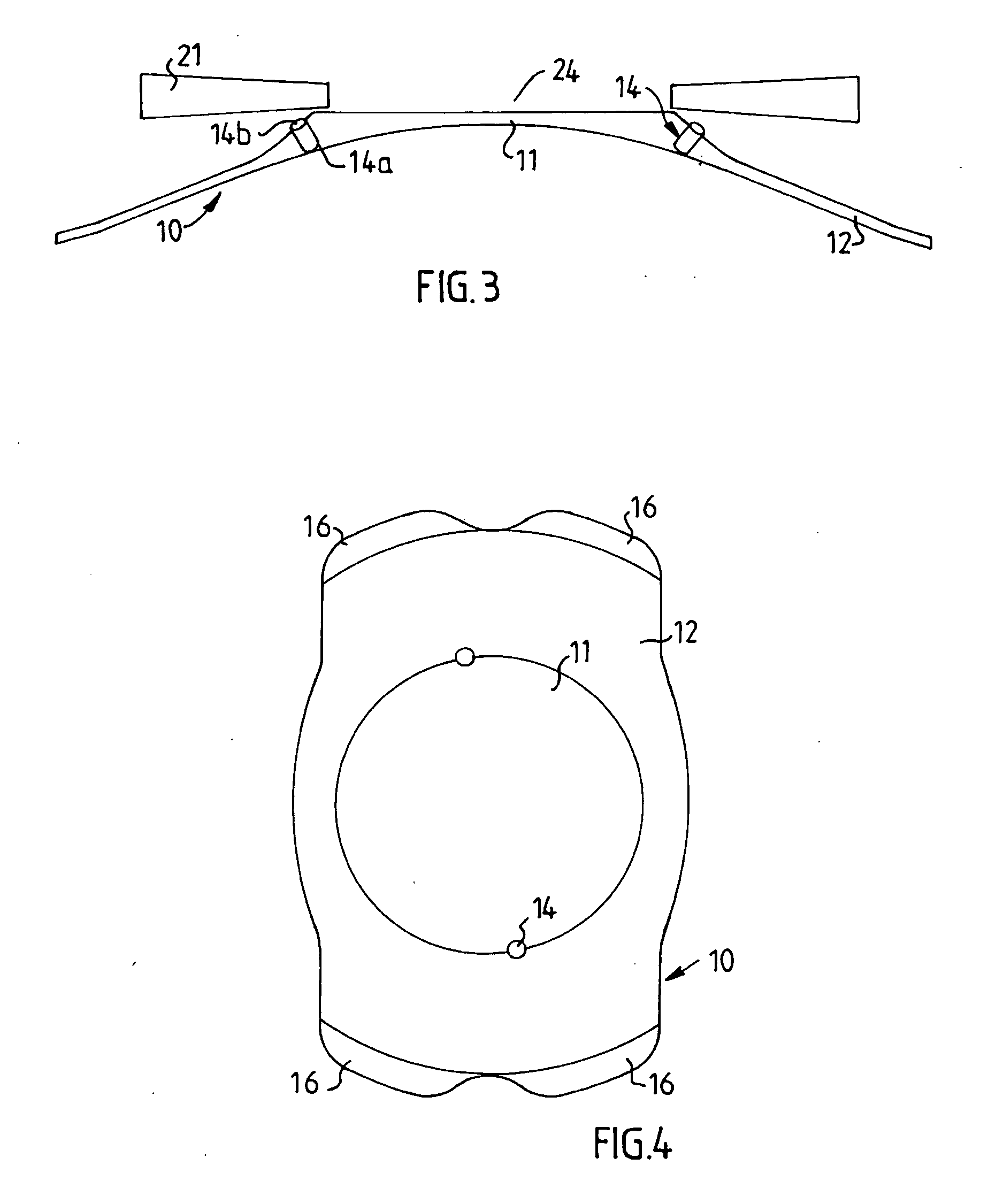Phakic intraocular lens with improved fluid circulation properties
- Summary
- Abstract
- Description
- Claims
- Application Information
AI Technical Summary
Benefits of technology
Problems solved by technology
Method used
Image
Examples
Embodiment Construction
[0037] In the most general terms, the present invention pertains to a PIOL, i.e. an intraocular correction lens for implantation in the posterior chamber of the eye between the iris and the intact natural lens (phakic posterior chamber intraocular lenses, PPC-IOLs). The correction lens comprises a centrally located optical part, capable of providing an optical correction, and a peripherally located supporting element, or haptic part, capable of maintaining said optical part in the central location. Viewed from above at use, the correction lens will generally have a total length of from about 9 to about 13 mm and a width of from about 6 to about 8 mm. These values are confined by, and determined individually from, the size of the posterior chamber of the individual patient.
[0038] The terms “natural lens” and “crystalline lens” are used synonymously throughout this application to denote the natural accomodative lens in the eye. These terms are also intended to encompass any replaceme...
PUM
 Login to View More
Login to View More Abstract
Description
Claims
Application Information
 Login to View More
Login to View More - R&D
- Intellectual Property
- Life Sciences
- Materials
- Tech Scout
- Unparalleled Data Quality
- Higher Quality Content
- 60% Fewer Hallucinations
Browse by: Latest US Patents, China's latest patents, Technical Efficacy Thesaurus, Application Domain, Technology Topic, Popular Technical Reports.
© 2025 PatSnap. All rights reserved.Legal|Privacy policy|Modern Slavery Act Transparency Statement|Sitemap|About US| Contact US: help@patsnap.com



